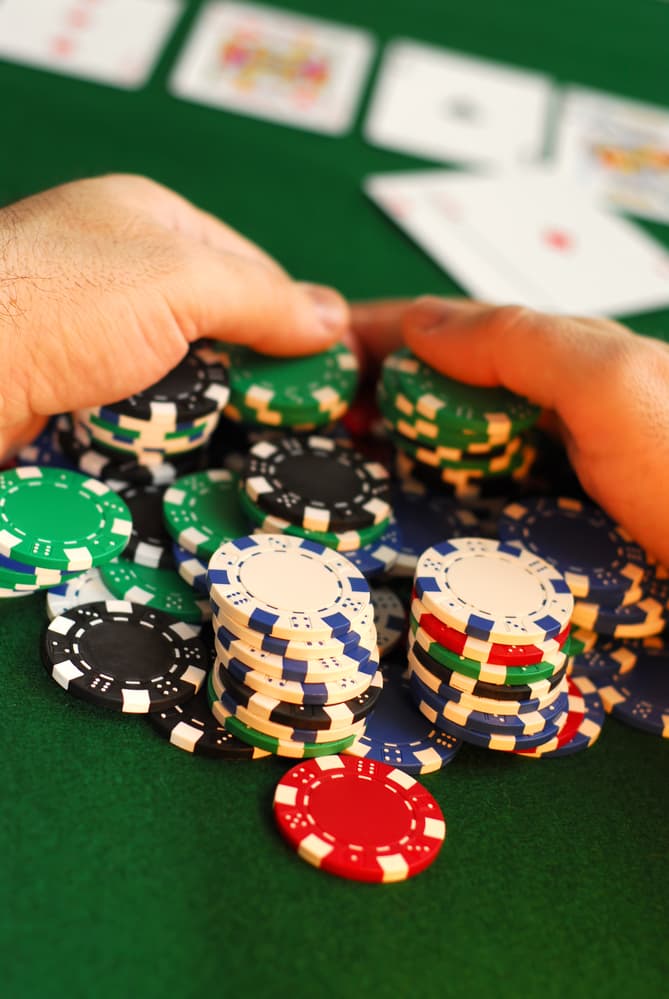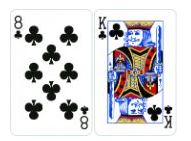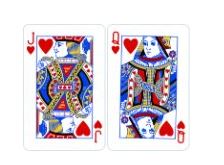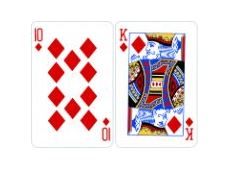Contents
Poker Traps
Poker traps are a fascinating area of discussion. Most poker players do not give them much thought. Traps come in various forms; levelling yourself, not giving opponents credit and overplaying your hand, to name just a few. Sometimes you trap yourself and by the time you realise it, you’ve lost a big pot. In this article, I am going to look at how we can set traps and also how to spot and avoid them.
Setting Poker Traps
A trap doesn’t have to just be a slow-played hand. This is rarely the most effective trap to set, even if it’s the most satisfying! Let’s look at several potential traps you can set for opponents.
The Same Bet as a Shown Bluff
Look, we never want to get called when we’re bluffing. But sometimes you can use a failed bluff to your advantage later in a session. It can be used with success in live cash games in particular.
Let’s say you get to the river and bluff bet $160 into $240 with your busted draw. Later, when you have a strong hand wanting a call, you may be able to use that bluff to your advantage. An astute player will recognise you bet approx. 2/3 of the pot. So, with a pot of $300, throw in a value bet of $200.
Try and make your mannerisms match your earlier bluff too and you will elicit a call a decent amount of the time.
Getting an Opponents to Stack Off Lightly in Tournaments
One of my favourite ways to pick up tournament chips is trapping players into stacking off lightly. This is usually achieved through our relentless late position stealing. The best part is when they eventually take a stand, lightly, and find themselves dominated. If you are constantly raising from the cut-off and button, your opponents have to incorporate some 3 bets to counter you. And guess what? Sometimes you will have a strong hand in late position too. If you are holding pocket tens or better, you are almost certainly holding the best hand against most 3 bettors from the blinds and can find yourself a big favourite. This is an awesome poker trap as it helps you pick up invaluable tournament chips. It works particularly well in live tournaments where players are literally watching you steal. Check out casinoguardian.co.uk for landbased UK casinos to use this move in.
Also, your steals cost you little when you fold. You’re enhancing your table image as a stealer, whilst improving your chances of a double up later. They are the ones risking more if they re-shove or 3 bet.
Slow-Playing To The River
The slow play is still one of the most effective traps around. In an era of aggressive opponents who love firing, checking and calling, until the river is a brilliant trap. Opponents in position love to bluff but they also love to value bet thinly if you’re checking. They will often hand read you for second pair or top pair weak kicker and keep firing. This means you can slow-play hands like top 2 pair or sets, on dry or mixed boards, and extract a lot of value. Most opponents will curse when the river check raise comes but begrudgingly call anyway.
Slow-playing takes practice. You can’t do this multiway or on wet boards. Often, a card will come to kill your action or actually give your opponent the best hand. Stick to adopting this strategy against aggressive opponents on the drier boards.

Spotting and Avoiding Poker Traps
Detecting traps and sidestepping them is a specialised skill that takes time to learn. Play enough hands and you will see patterns and find leaks that need working on. Most of them are some form of trap and often you will find that the biggest trap is one you put yourself into. Let’s look at a few traps to spot and solution to avoiding them.
Overplaying from The Blinds
It baffles me when I see players lose lots of chips or money from the blinds in a limped pot. Players forget that it’s a nothing pot. A top pair with a lousy kicker is not much of a hand multiway but it doesn’t stop many from continuing far into a hand with it. Spotting this trap is simple – if you’re multi-way with a weak or medium strength hand, just say to yourself “ I invested 1 big blind to play this”. It may seem a negative mindset, but money saved is money earnt if you’re losing a lot in these scenarios.
You won’t make most of your money from the blinds so don’t worry that you may be bluffed out from time to time.
Levelling Yourself
We’ve all done it. You’re involved in a hand thinking your opponent is pulling some elaborate bluff or that you believe he’s got “ace-king” despite all evidence to the contrary. It’s frustrating and symptomatic of wanting to believe you have the best hand, at any cost. You’re not alone in this trap. All the best players have levelled themselves before and will do so again too. I find the best way to avoid levelling myself is to narrate the hand I play in real time. This allows me to remember the information properly, not get attached to my hand, and consider all the variables properly before making decisions. It’s simple but effective. My narration might go like this:
“A good LAG has opened from early position to 3x, I’ve defended big blind with pocket sevens and check called a 60% pot bet on a jack-nine-six (2 heart) flop. I check turn four of hearts and he is betting 70% of pot. As he’s a LAG it’s plausible he would play a hand with a jack in it from early position. My range looks like a jack or flush draw so the fact he is still betting represents strength”.
If I didn’t vocalise it I may just believe my sevens are good, that he may have ace-king with a heart or other big cards. When in reality, my hand is seldom good here.
Narrating the hand when you have a decision may help you make better decisions and avoid levelling yourself.
Pair & Draw Multi-Way
Sometimes, we play a speculative hand and find ourself flopping a lovely looking hand. You know the type, a pair and straight draw or pair and flush draw. These are great looking post-flop hands and give us hope of winning a decent big. However, when the pot is multi-way, wet board and a lot of action, players tend to disregard their opponent holdings and get stubborn. This is a common trap players get into.
Consider, a hand:

You get to a flop:

Your hand looks pretty good in isolation, top pair and flush draw. However, when action gets going 3 way here, what are they likely to have? A straight, two pair and a set are the likely hands, all of which we are doing badly against.



The best way to avoid this trap to try and get to later round cheaply. Don’t invest too much on the flop as you may find yourself pot committed with a weaker hand.
Not Caring the Board Paired
An expert player is always wary of the paired board ruining their two pair, straight or flush. This is a trap that professionals have less trouble with. They’ve played enough to realise when their hand can no longer be good. For beginners and intermediate players, this is a frequent trap. Hand strength is relative to the board texture, opponents involved and action developing. If you flopped a low straight and the board run out pairs the board, sometimes your opponents have just filled up. This is what a lot of people consider a bad beat, when it isn’t at all. If your opponent had a flopped set, they have a decent shot at beating a straight by the river.
I am not advocating every time the board pairs, that would be awful. Instead, consider just calling a river bet in position and check/deciding from out of position.
Not Giving Credit for River Check Raise
The river check raise is one of the most powerful post flop poker moves in Texas Hold’em. It is also one of the rarest poker bluffs made. Only the bravest of experts perform this bluff with any kind of regularity. With this in mind, you should be employing very tight calling ranges when facing a river check raise. I think calling a river check raise is probably the biggest trap players fall into. They just can’t bring themselves to fold. If you’ve bet your hand all the way until the river and your opponent wants to check raise it. Nine times out often they are doing so for value. They want to extract maximum value out of you so if you’re there with top pair, you need a very good reason to call it.
To avoid this trap, I recommend using pot odds diligently and applying conservative estimates to their bluffing frequency. If you need to be good 25% of time to make the call, it may seem lucrative odds, but what is the true bluffing % of your opponent in that spot? Are they really check raise bluffing you more than 25% of the time here?
If you are keen to learn the river check raise bluff, our poker bluffing course has a module dedicated to it.
Relevant Articles



